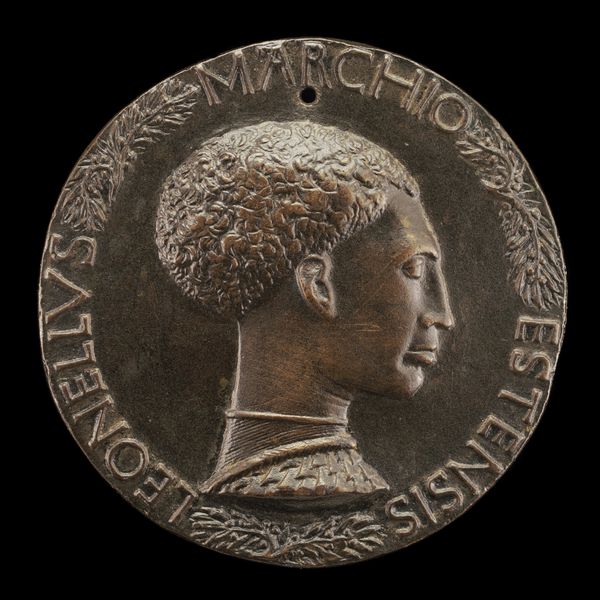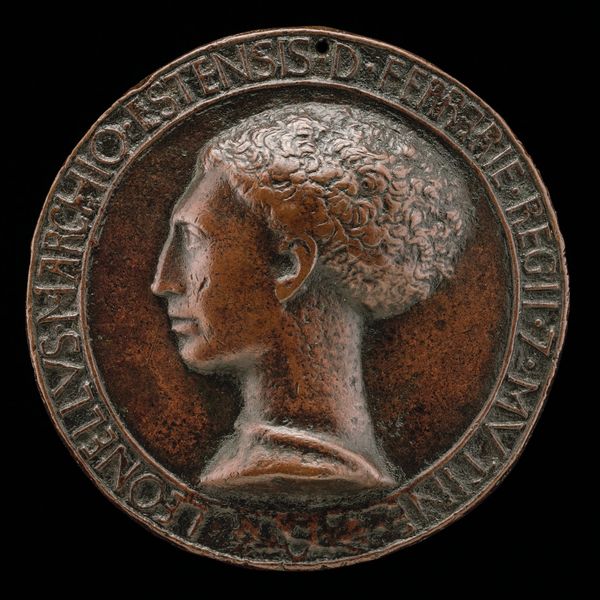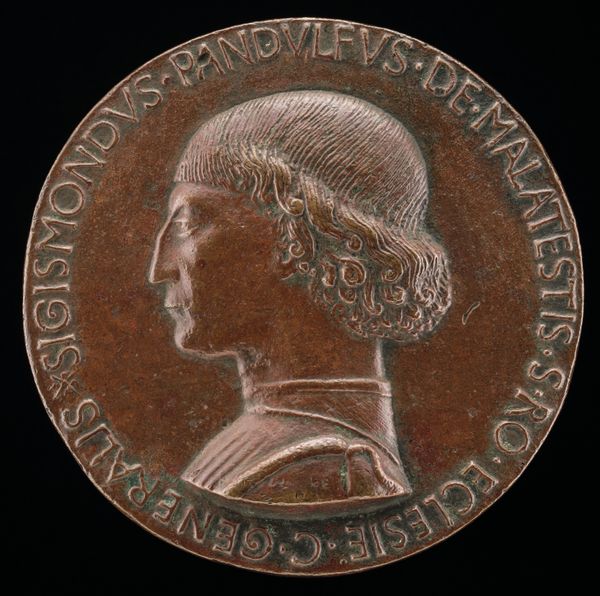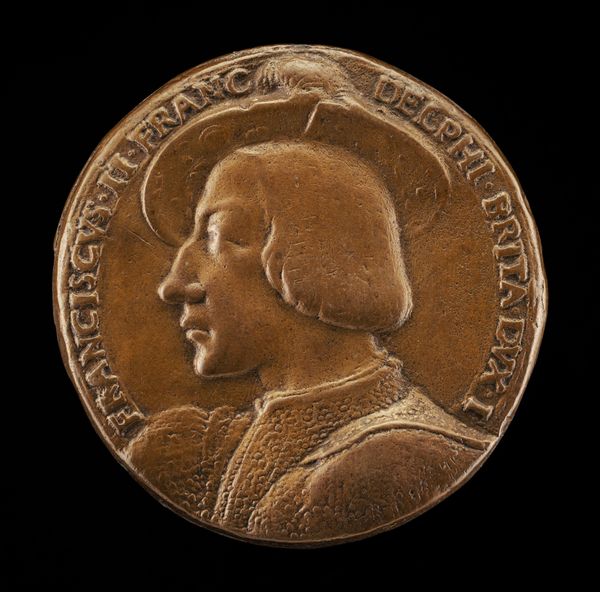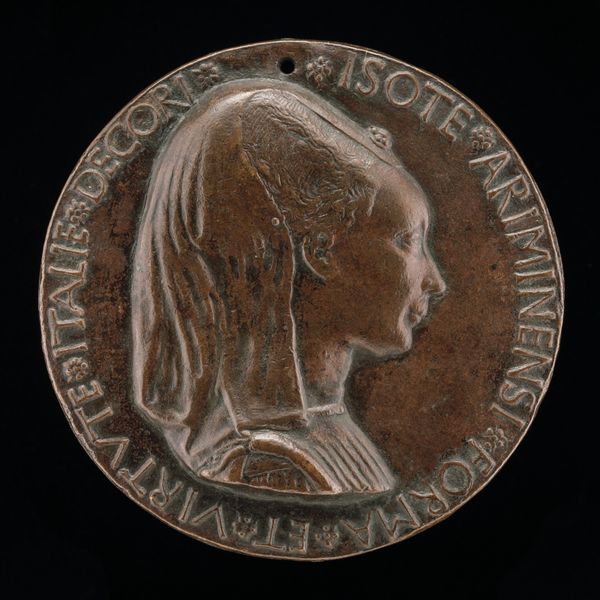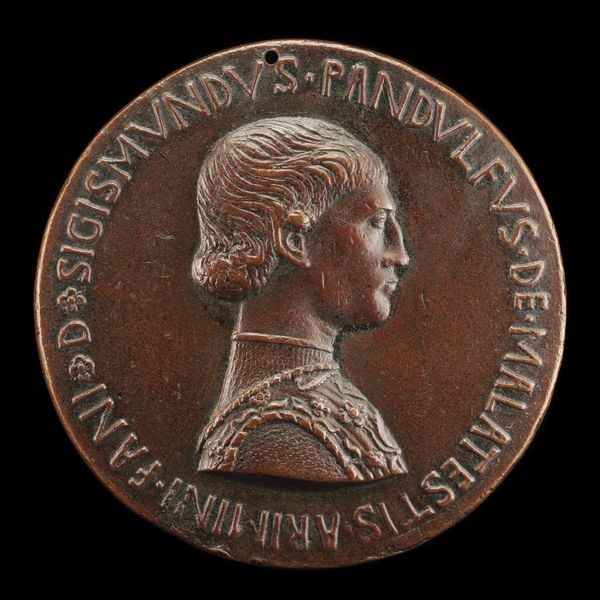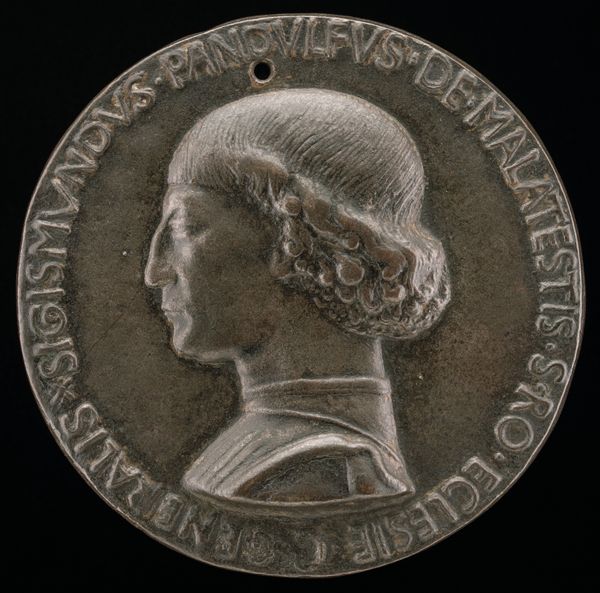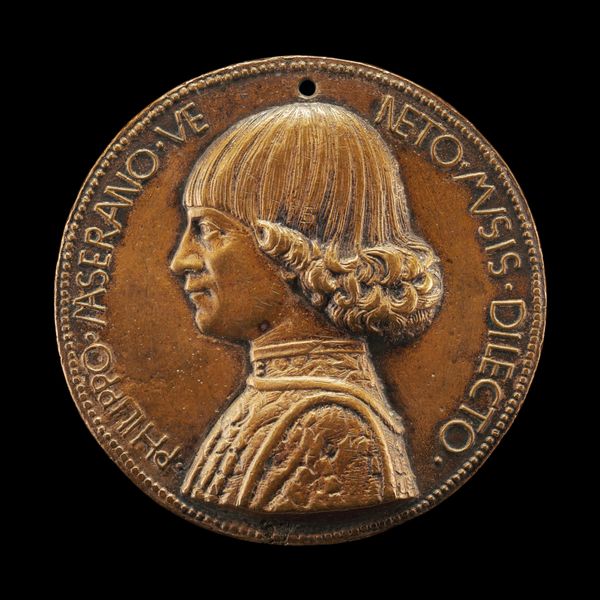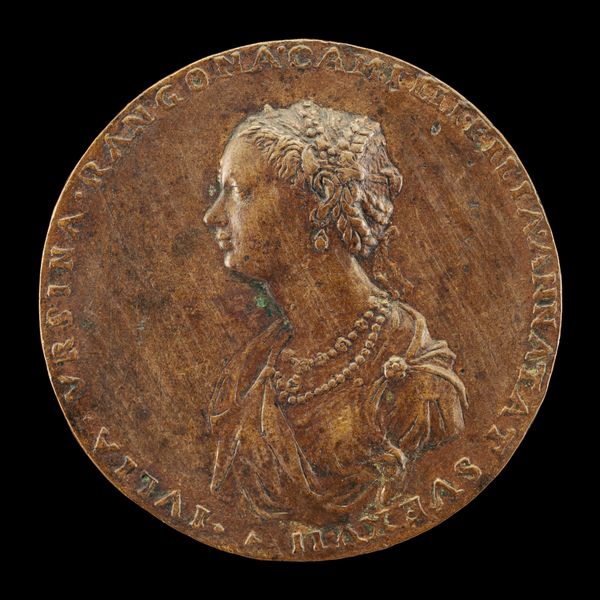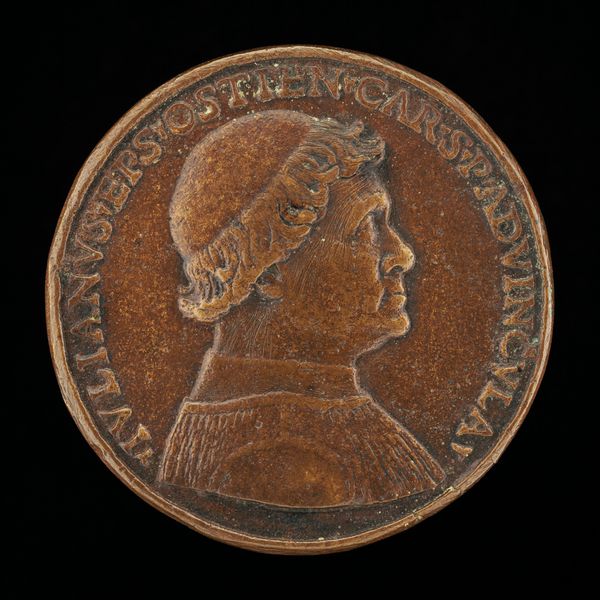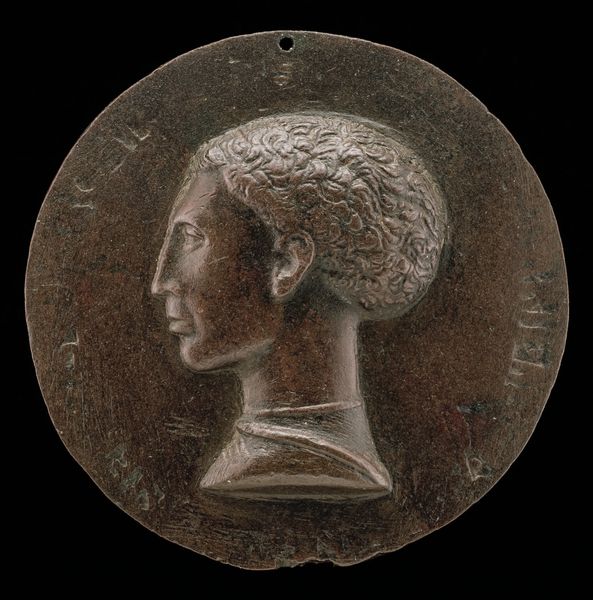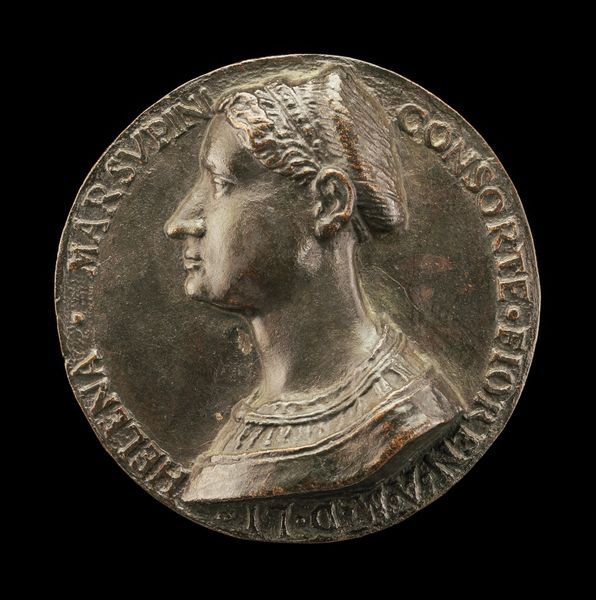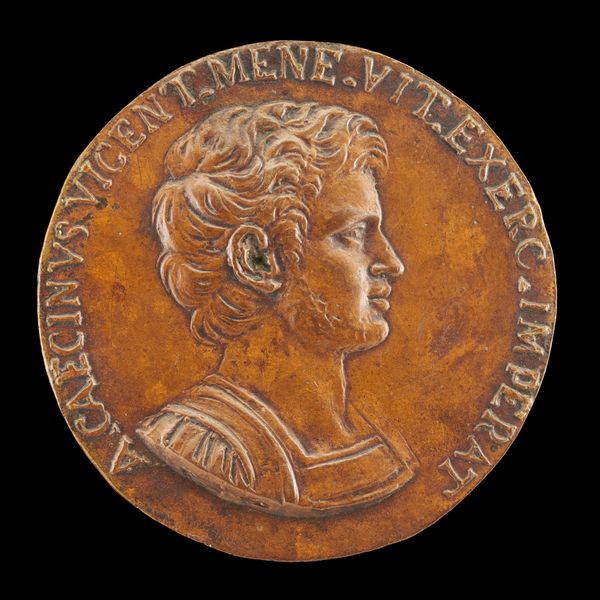![Leonello d'Este, 1407-1450, Marquess of Ferrara 1441 [obverse] by Pisanello](/_next/image?url=https%3A%2F%2Fd2w8kbdekdi1gv.cloudfront.net%2FeyJidWNrZXQiOiAiYXJ0ZXJhLWltYWdlcy1idWNrZXQiLCAia2V5IjogImFydHdvcmtzLzdlM2JiNDUwLTlhODctNDdjZS1hNDllLTJiYTE2M2NmNTdlZS83ZTNiYjQ1MC05YTg3LTQ3Y2UtYTQ5ZS0yYmExNjNjZjU3ZWVfZnVsbC5qcGciLCAiZWRpdHMiOiB7InJlc2l6ZSI6IHsid2lkdGgiOiAxOTIwLCAiaGVpZ2h0IjogMTkyMCwgImZpdCI6ICJpbnNpZGUifX19&w=3840&q=75)
Leonello d'Este, 1407-1450, Marquess of Ferrara 1441 [obverse] c. 1443
0:00
0:00
metal, relief, bronze, sculpture
#
portrait
#
3d sculpting
#
metal
#
sculpture
#
relief
#
bronze
#
sculpture
#
italian-renaissance
Dimensions: overall (diameter): 6.83 cm (2 11/16 in.) gross weight: 147.48 gr (0.325 lb.) axis: 12:00
Copyright: National Gallery of Art: CC0 1.0
Curator: Here we have a bronze medal created by Pisanello around 1443. It’s a portrait of Leonello d'Este, Marquess of Ferrara. Editor: Instantly, I’m struck by how clean and austere it is, yet full of understated power. The man has presence. His gaze carries across the centuries like it was only yesterday when he pondered the issues of his reign. Curator: Pisanello truly excelled at capturing the essence of Renaissance rulers. Observe how the profile is meticulously rendered. Note the line of the jaw, the curl of the hair. Every detail is sharply defined. The inscription that surrounds the figure reads "Leonellus Marchio Estensis". Editor: You can practically feel the coolness of the metal against your fingers, can't you? And I’m really responding to the subtle variations in the bronze’s patina. It’s lovely how time has aged and enhanced it, don't you think? Like a well-worn memory. It has also clearly had a hole at the top, where the bronze has clearly rubbed against itself after a long life. Curator: Indeed. The material is critical to understanding the medal's function. Bronze lends it permanence and weight, elevating Leonello beyond the ephemeral. This isn't mere decoration, but a lasting emblem of authority. And notice how Pisanello uses relief to create depth. It is not merely two dimensional; there is shape here. The artist is almost showing that the man in the image is real; or was real, and he is keeping him that way with the piece of art. Editor: Almost magical, how a few well-considered details create the impression of personality and even hint at destiny. Curator: It’s also interesting to consider that these medals were often gifts or diplomatic tokens. So they weren’t just artistic creations. They functioned within the intricate web of power and patronage that was part of life during the Italian Renaissance. Editor: Yes! They’re historical documents, aren't they? Glimpses into a world of ambition and artistic fervor. Each time one holds up one of these, they might also be able to ponder the idea of how someone might see *us* a thousand years from now. Curator: Ultimately, this small bronze carries an impressive load of information, making a remarkable bridge across time, culture, and even expectation. Editor: Pisanello captured something profound with incredible artistic economy. We are only richer as a species for possessing works of art such as these.
Comments
No comments
Be the first to comment and join the conversation on the ultimate creative platform.
